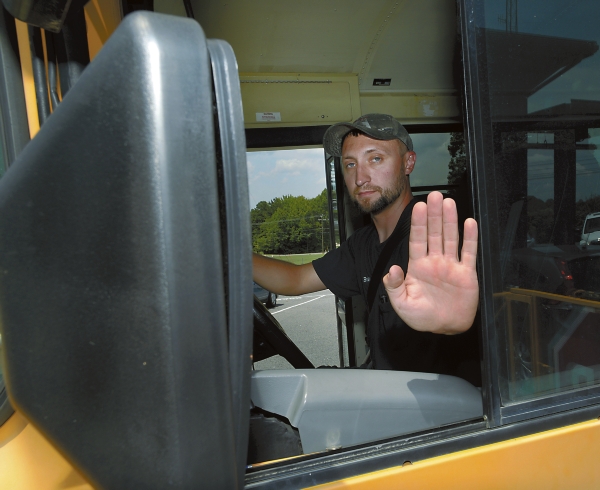School bus drivers to use new hand signals; requirement helps boost student safety
Published 12:00 am Thursday, December 31, 2015

- Wayne Hinshaw/For the Salisbury Post In this August file photo, Rowan-Salisbury schools Transportation Supervisor demonstrates how a bus driver would signal a student to wait before crossing the road.
Beginning Jan. 1, all North Carolina public school bus drivers will be required to use hand signals to help students safely cross the road to board the bus. The North Carolina State Board of Education approved this revision to its bus safety policy at its July meeting.
In the 2014-15 academic year alone, five North Carolina students were injured by motorists passing stopped school buses. Since 1999, 13 students have been killed while boarding or exiting a school bus. North Carolina law requires motorists to stop and remain stopped while the bus has its stop sign and flashing red lights engaged. However, according to research conducted by N.C. Department of Public Instruction Transportation Services staff, most school bus-related student injuries and fatalities stem from drivers who disregard the school bus sign.
“We have over 15 years of data to show that more than 3,000 cars per day are not going to stop. It’s clear that public awareness campaigns alone won’t reverse this trend,” Department of Public Instruction Transportation Services Section Chief Derek Graham said. “The revised policy represents a more proactive approach to what bus drivers and students can do to stay safe even when motorists don’t obey the law.”
Drawing from national procedures as well as school bus safety standards and practices from across the country, the revised policy requires bus drivers to use a standard hand signal that tells students a roadway is safe to cross. The hand signal has the following three steps.
1. Driver holds up his or her palm facing the student until it is safe to cross.
2. Driver gives a “thumbs up” to the students.
3. Driver points with his or her index finger the direction in which the child should proceed across the road.
The hand signals empower the driver, usually the only school system employee on the scene, and compel students to consciously assess the roadway by looking at their bus driver before stepping into an active road. A graphic presentation of this new signal is available online.
The revised school bus policy also requires that school districts document their training and provide training to all students, not just those who ride the bus.
Although this policy requirement becomes effective Jan. 1, some North Carolina school districts have already begun using the new hand signals. Visit the N.C. School Bus Safety website for more information on this policy or school bus safety in North Carolina.


